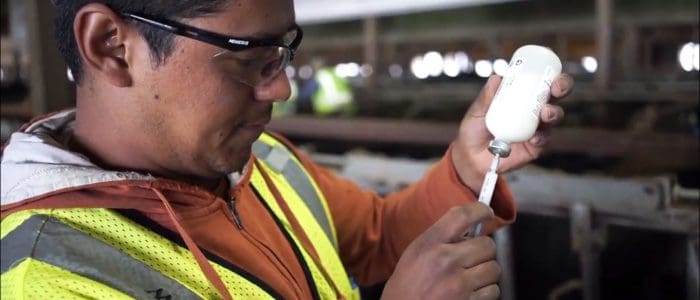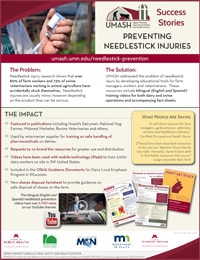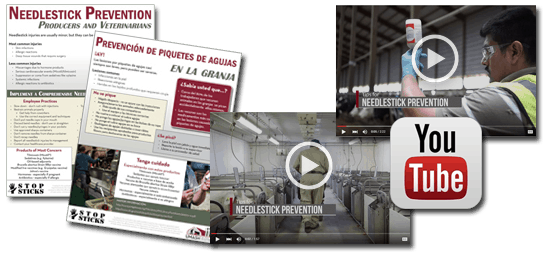THE PROBLEM:
Needlestick injury research shows that over 80% of farm workers and 73% of swine veterinarians working in animal agriculture have accidentally stuck themselves. Vaccines are the most common type of product involved.
Needlestick injuries are usually minor, however depending on the product, they can be serious causing:
- Skin infections
- Allergic reactions
- Deep tissue wounds that require surgery
- Miscarriages due to hormone products
- Serious cardiovascular events



